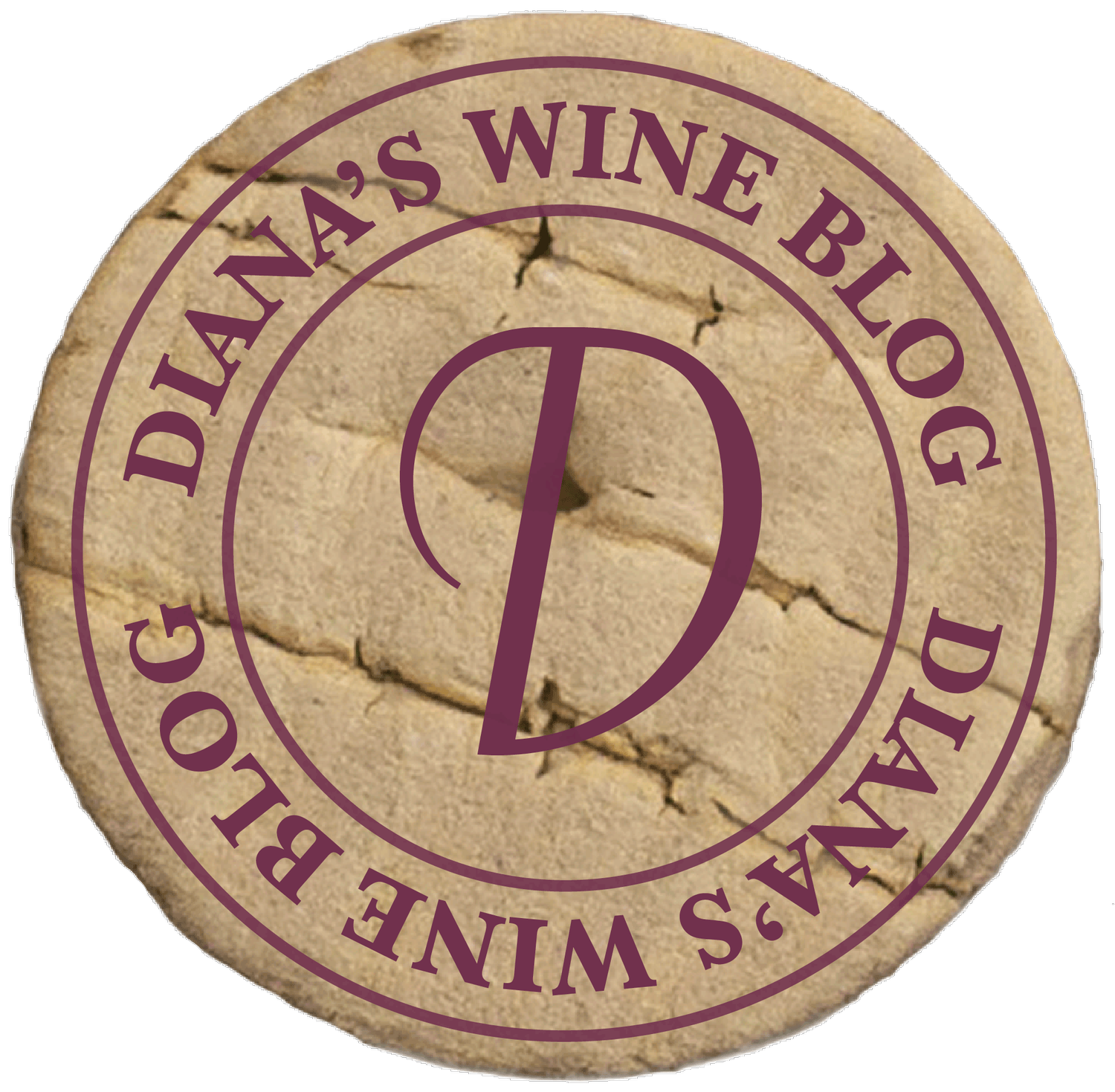
Why Is Wine Important?
Wine, in itself, is not important. What it contributes and what it allows for are more relevant. Wine is meant for sharing; it allows for and encourages being together to make memories. Every bottle represents the caring and love we have for friends and relatives. Each occasion calls for a type of wine and helps create a setting for mutual experiences and expression of emotions. Wine is an entrée to moments and pleasure to be with one another, and the beauty of wine is an integral part.
What it takes to create that bottle of wine is vastly important. The caring and effort to bring to fruition the magic inside are immense. The people who dedicate their time and energy to each step of the process are very important. The fields that need to be furrowed, the vines that need to be planted, the grafting of each one, and the tender care it takes to have it all flourish are remarkable. The care each plant is given throughout the season requires diligence and competence. The leaf management to ensure that each cluster receives just the right amount of sun and warmth is amazing. What it takes to bring those luscious berries to their fullest expression is a work of art. Then, there is harvest! This is where the challenge takes on a greater relevance as the winemaker begins the journey from grape to bottle.
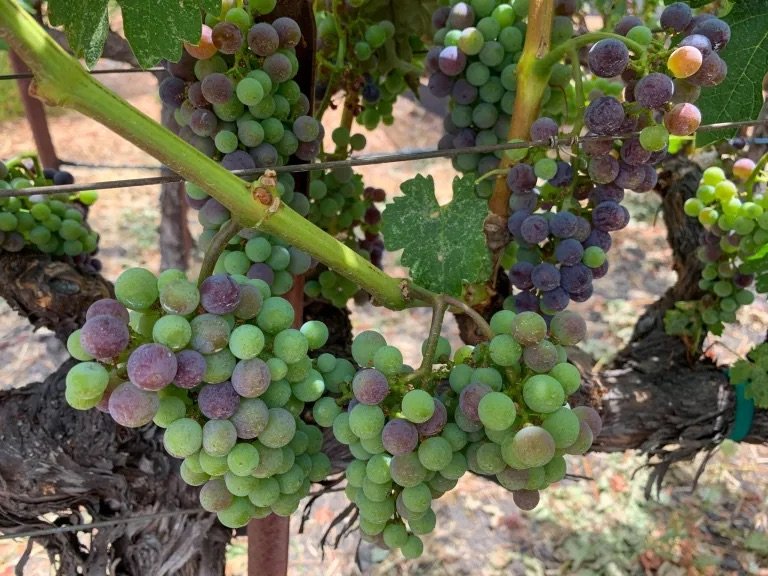
Veraison: What Is That?
Veraison is a pivotal time in the vineyard. It is when the grapes change color and rapidly begin to store sugar. The time is notable, as it is a predictor of harvest. The time for each varietal is variable, yet you can look forward to harvest some 40 to 60 days from veraison.
Veraison itself means “change of color of the grape berries.” For red grapes, it is most obvious when the young green grapes become a red hue. White grapes also change in appearance, they remain green yet become translucent or golden. It never happens all at once for a bunch as you will see in the pictures. (The vineyard in the photos is a cabernet vineyard.) The grapes change color at varying times on the same bunch on the same vine.
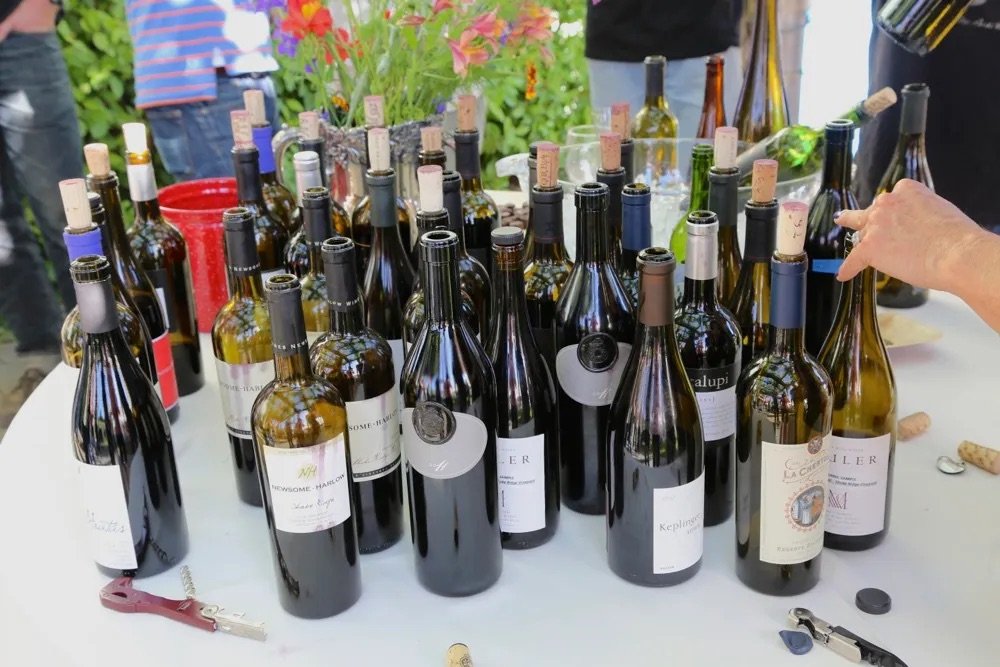
Wine: How Do I Choose??
This is a simple question, yet the answer can be very complex. In surveys, the number one reason people do not drink wine is that they find it too hard to choose which one to buy. It is a big question, no doubt. Just recently I read a blog that listed the number of different bottles of wine available to buy in the world at any point in time, and it totaled a million. Whoa, that is a big number to sort through. I fully appreciate the challenge.
Wine itself is not a single note expression like cola. When you pick up a bottle of Coca Cola or Pepsi, there is a specific flavor profile that is expected. The degree to which that expectation is met is tied to customer satisfaction and repeat sales. So, for a manufacturer to deliver, they must adhere to a specific process to replicate the product’s profile, time after time.
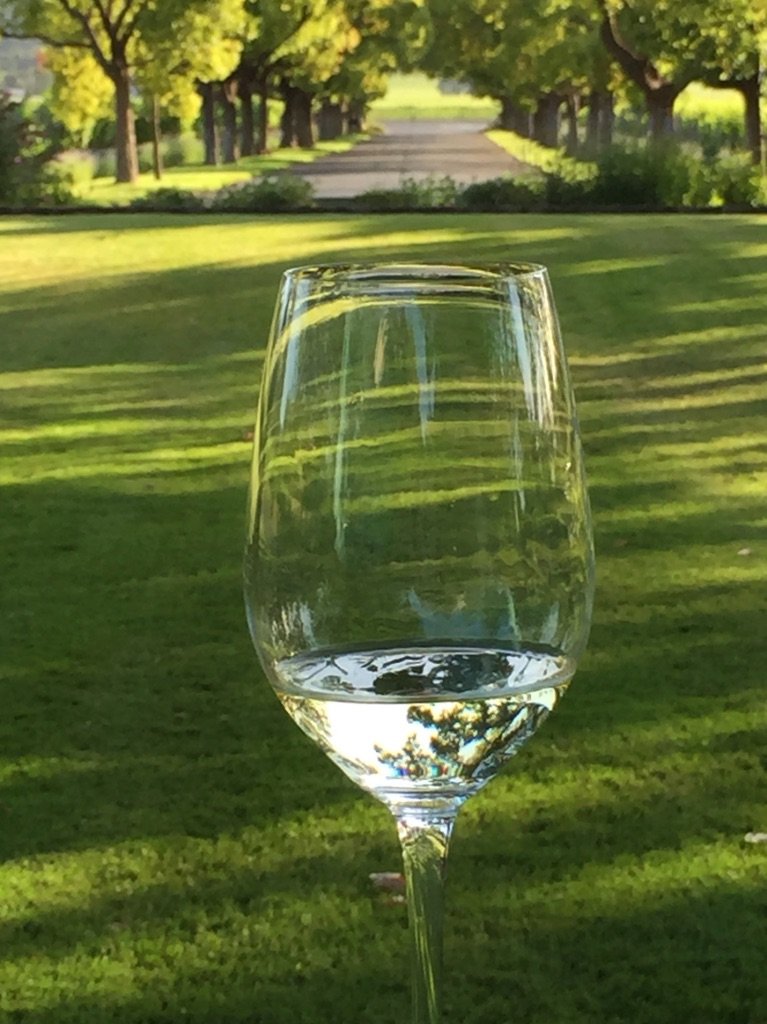
Whose Fault Is It, Anyway??
We all know that taste is 80% smell. You still remember the day you had a stuffy nose and nothing tasted good. You couldn’t taste much at all. So, what is it when the aromas and flavors are off in a wine?? What does that mean?? Is it the wine’s fault, a bad bottle, or something else? That is the question.
Here is the first rule of thumb in drinking wine. Yes, it is a rule. Before you pour that wine, smell the glass. I mean that emphatically. Today’s dishwashers are wonderful, yet they recycle water. I have many times been put off by the stinky odors in a clean glass that was washed in the dishwasher. It is a simple fix. If you get anything other than a neutral aroma, simply rinse the glass with water. Dry it with a towel specifically for crystal, if that is what you are using, to avoid scratching the glass. Once that glass is neutral, then you can pour.
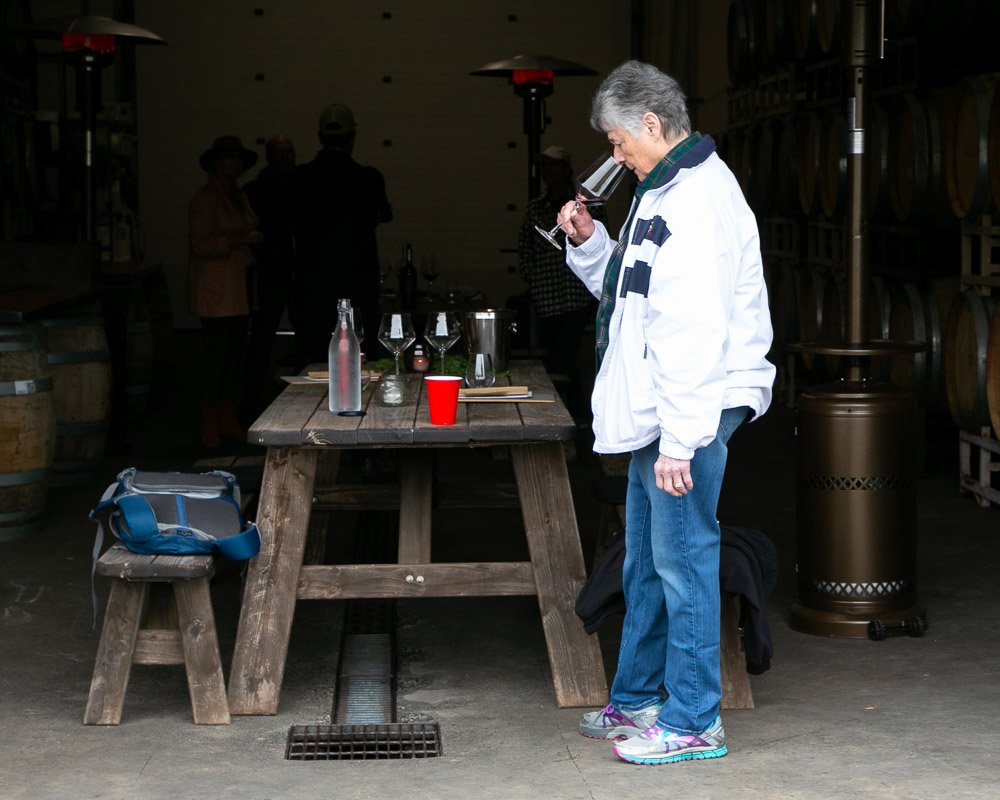
Enjoying Wine with All Senses
Many times, I have observed people drinking wine in a casual environment, at a gathering or over dinner. They raise the glass to their lips and drink it in. What is wrong with that you might ask? Nothing, nothing at all; yet there may be more to garner from the pleasure of wine if there were more thoughtfulness in the process.
Wine is a multi-faceted beverage, and the more curious approach may yield more depth and breadth of flavor when you engage more of the senses. This type of exploration may heighten the enjoyment and offer expanded knowledge each time. Each glass becomes a practice session for engagement of the senses to discover what is in the glass.

For the Health of Our Wine: Not Over the Fridge!
All of us have a specific preference for temperature and sunlight. Mine is somewhere above 60 degrees with an ample amount of blue skies and not too much moisture (rain that is). Hmmm, that makes a good argument for California. I found this out living in the frozen tundra of Minneapolis for several years. My point is that there are ideal conditions to preserve our health and well-being.
That holds true for wine. If you have visited wineries and walked through the caves, you know that the main purpose of the cave is temperature control and high humidity. You have heard the number 55 degrees. Well, it is all about controlling the reaction in the barrel and the bottle. A bottle of wine will eventually turn to vinegar left to its own devices in high heat and excessive oxygen.

Natural Cork vs. Screw Cap: Which Is Better?
There is an impression in the marketplace that a Stelvin (screw cap) closure on a bottle of wine infers a wine of less quality and value. Is it true or a misunderstanding? What does the bottle closure really do and what are the differences between the two? Why does it matter?
First, let’s look at what a bottle stopper does for wine. Wine is made up of water, alcohol, sugar, phenolic compounds and acids. It is the winemaker’s purpose to bring these components into balance. If too much oxygen gets in too quickly, it will decrease the fruity aromas and flavors found in that wine. It will also impact the color of the wine – darkening white wines and lightening reds. It is the job of the stopper to moderate the amount of oxygen that gets into the bottle over time.

To Decant or Not to Decant
Hi, everyone, and happy holidays!
At this time of the year when we’re sharing good cheer with friends and family, it is a time to pull out that special bottle to share. The question, then, is how best to prepare the wine. Is it a bottle to decant or not? In this four-minute video, Sommelier Amanda McCrossin shares some excellent tips on whether to and how. These are basic guidelines yet she provides more than that. I highly recommend watching the clip.
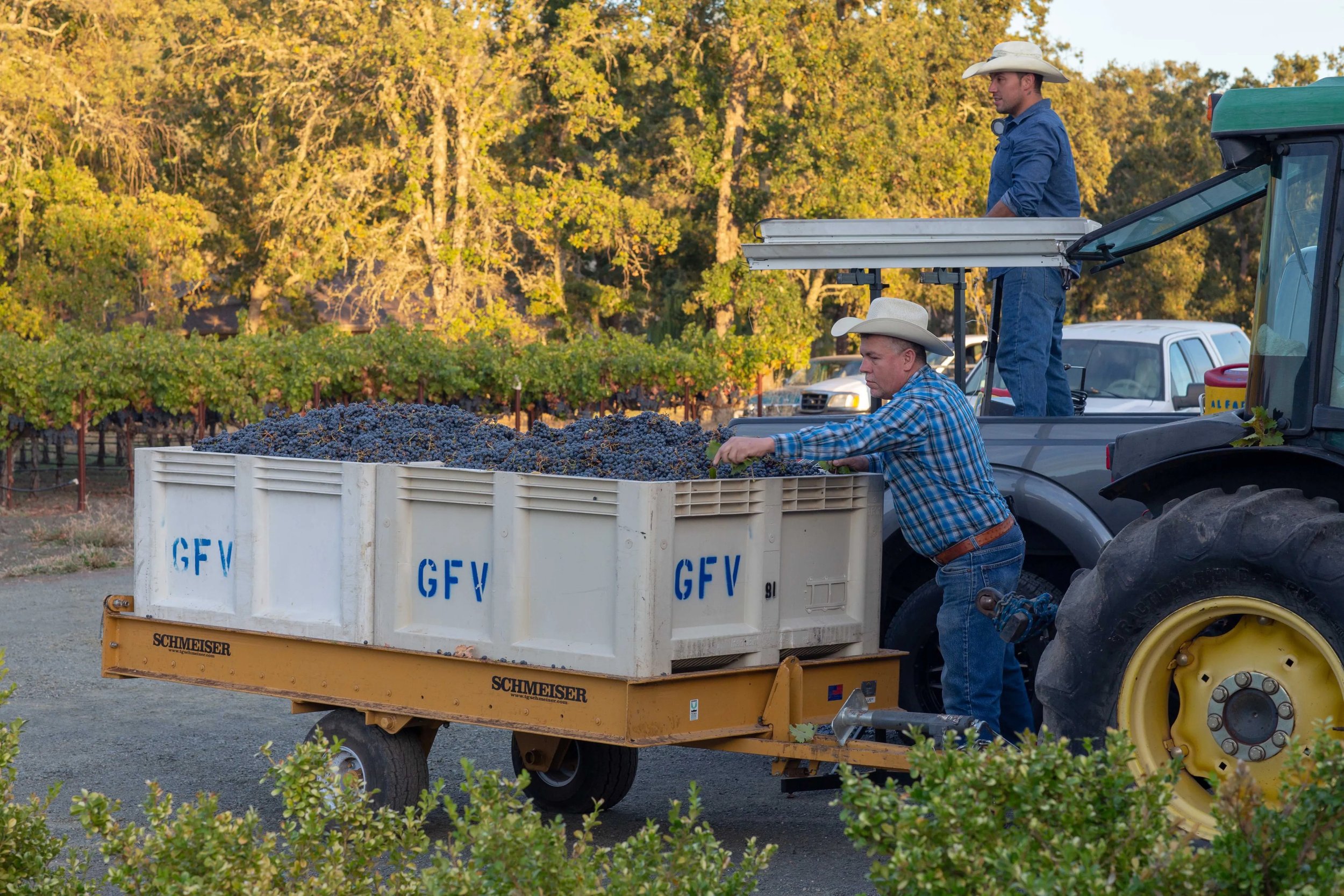
Harvest in the Napa Valley!
Harvest is a special time in the valley. It is the culmination of diligence and oversight of the vines and the evolution of the fruit. This year we were in the vineyard with our friend as his grapes were picked and hauled away to the waiting winery. It was especially sweet since last year his entire crop was lost to smoke taint from the Tubbs Fire. For the vineyard owner, it was a truly remarkable harvest experience.
The process of picking customarily takes place in the cool of the evening. The reason for this is so the process of fermentation does not begin. The cool evening hours provide a measure of assurance that the process does not start without the oversight of the winemaker. There is much to be done before the fermentation begins to bring that lovely bottle of Cabernet to your table.

The Price of a Cab — Cabernet Sauvignon, That Is…
Have you ever stood in the aisle of the Cabernet Sauvignon section at the store and wondered, “Why is this one $8 and this one $80?” I suspect you assumed the difference was quality. That’s a fair assumption, yet have you wondered what contributes to the cost of that quality? What is it about the winemaking process that leads to those differences?
First, let me stake out that there are no hard and fast rules, yet there are approaches and techniques in winemaking that make a quantitative difference in production costs. Here are some of the aspects that feed into the cost of your bottle of Cabernet, whatever you choose for whatever occasion.
